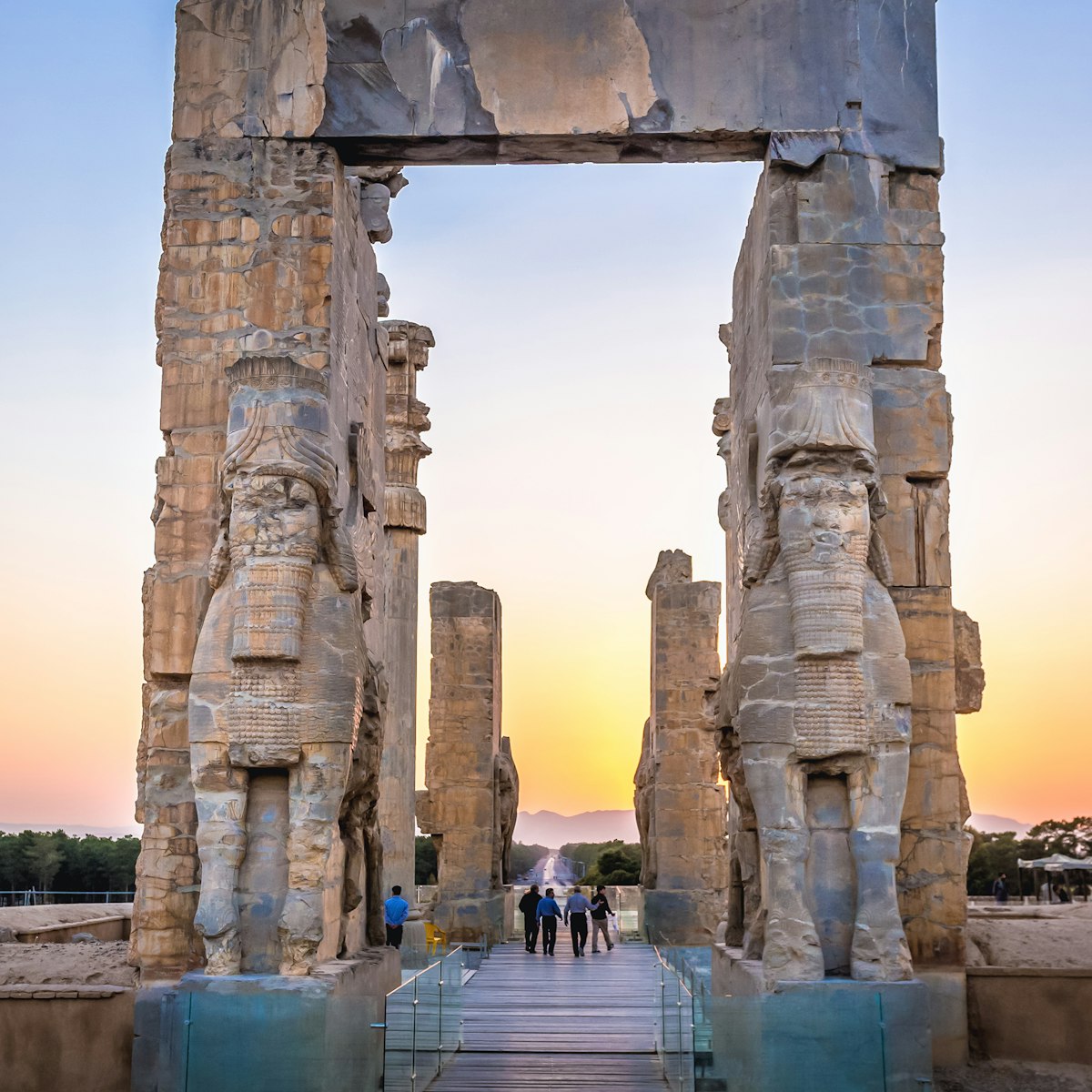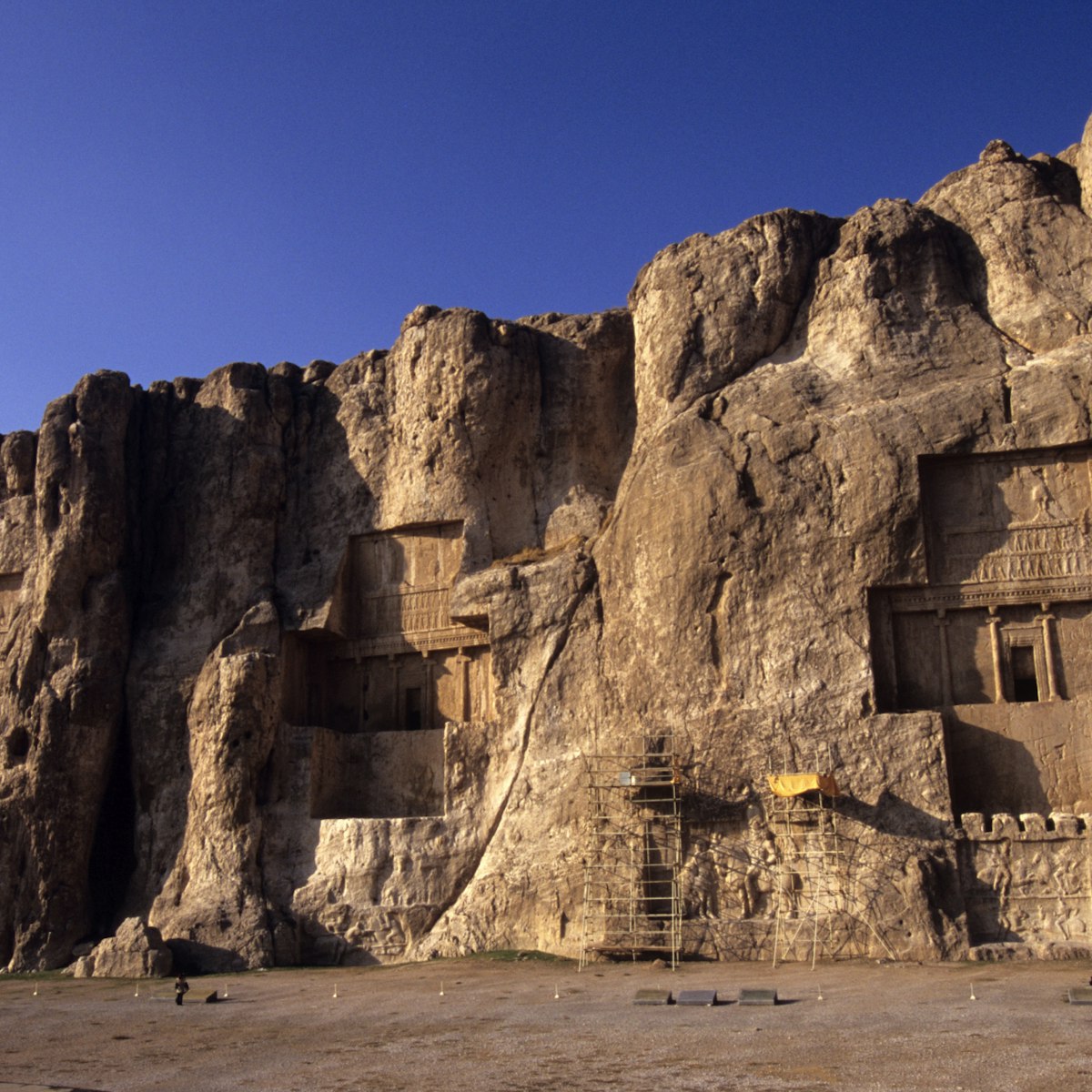With an extravagant hall measuring almost 70 sq metres and supported by 100 stone columns, this palace formed one of two principal reception areas in Persepolis. Built during the reigns of Xerxes and Artaxerxes I, some believe it was used to receive the military elite upon whom the empire’s security rested. Today, enough of the broken columns remain to give an idea of the palace’s former grandeur, and fine reliefs show a king, soldiers and representatives of 28 subject nations.
Little remains of the adjacent Hall of 32 Columns, built at the end of the Achaemenid period. The arrival of Alexander and his armies brought an end to work on a larger version of the Xerxes' Gateway (Gate of All Nations) in the wide courtyard in front of the Palace of 100 Columns; the unfinished gate still stands – a commentary on the city’s sudden demise.




